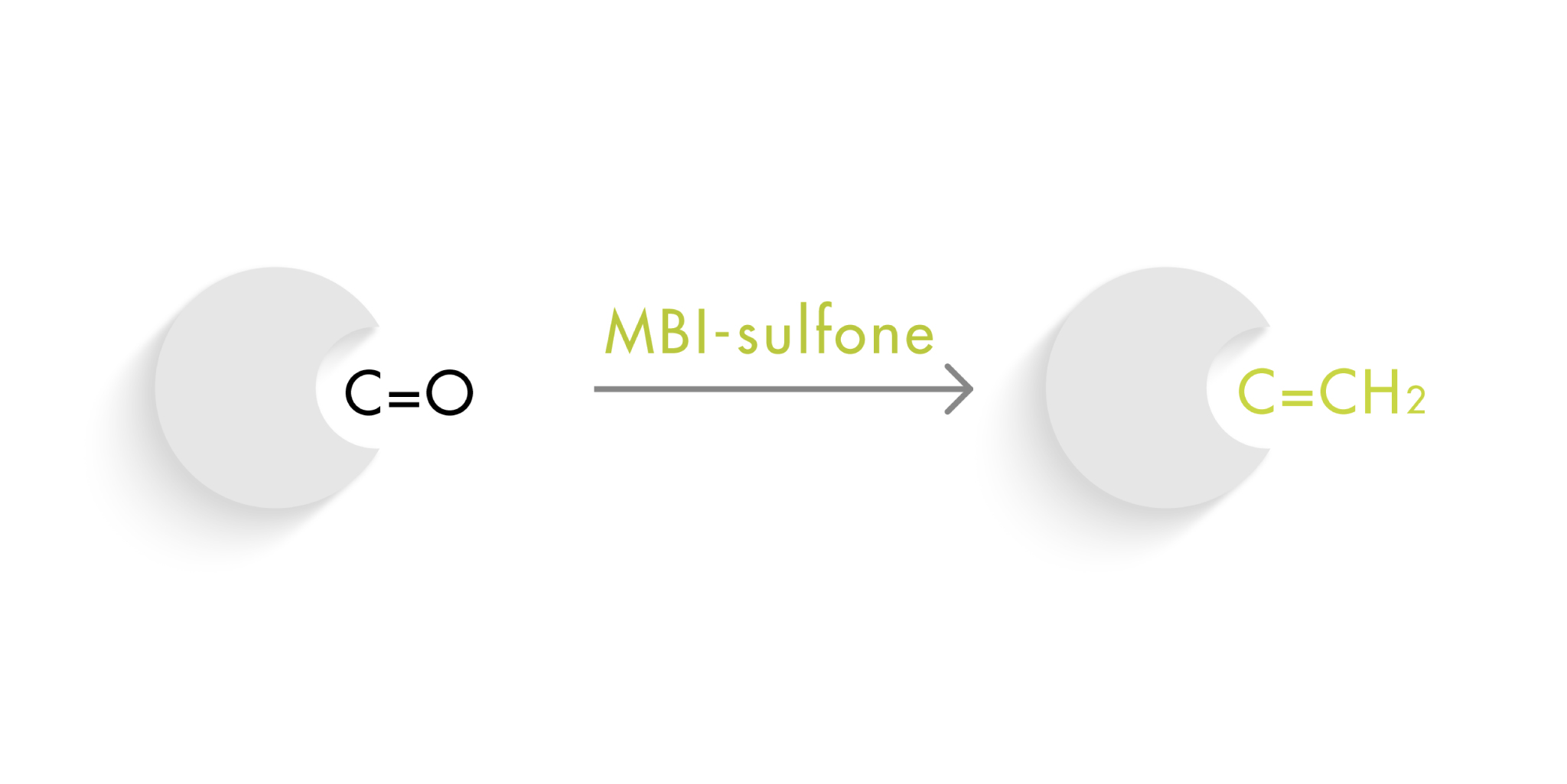This paper caught our eye because in one of the multiple projects ongoing in our labs, we are facing a rather tough methylenation. One of those reactions that make you revisit the whole list of options available.
There are plenty of methods that afford double bonds from carbonyl compounds. It is one of the most used reactions in organic synthesis and it used to be popular until the coming of metal-mediated couplings. Famous names: Wittig, Peterson, Tebbe, Petasis, etc., most of them with a long list of tweaks and tricks. It is indeed a worthy trip into the history of organic synthesis.
Even with all the options available, there is always room for another trick. In this case, a new reagent for the Julia–Kocienski reaction, which is a modification of the original Julia reaction.
The new reagent is prepared in two high-yielding steps from 2-mercaptobenzimidazol by dimethylation with MeI and oxidation using H2O2. The result is 1-methylbenzimidazol-2-yl methyl sulfone (MBI-sulfone), which is an effective methylenation reagent with many substrates where common conditions (Wittig and so) typically give poor results.
MBI-sulfone can be applied in two different protocols, one employing NaHMDS in DMF (typically 1.3 to 1.7 eq.) and the other using t-BuOK in DMF (3 eq.). The second protocol is by far more user friendly and yields the product at r.t. in a couple of hours. The paper goes on with more examples, comparisons with other reagents, chemoselectivity studies, etc. but, in summary, the reagent works fine where other classical options fail.


